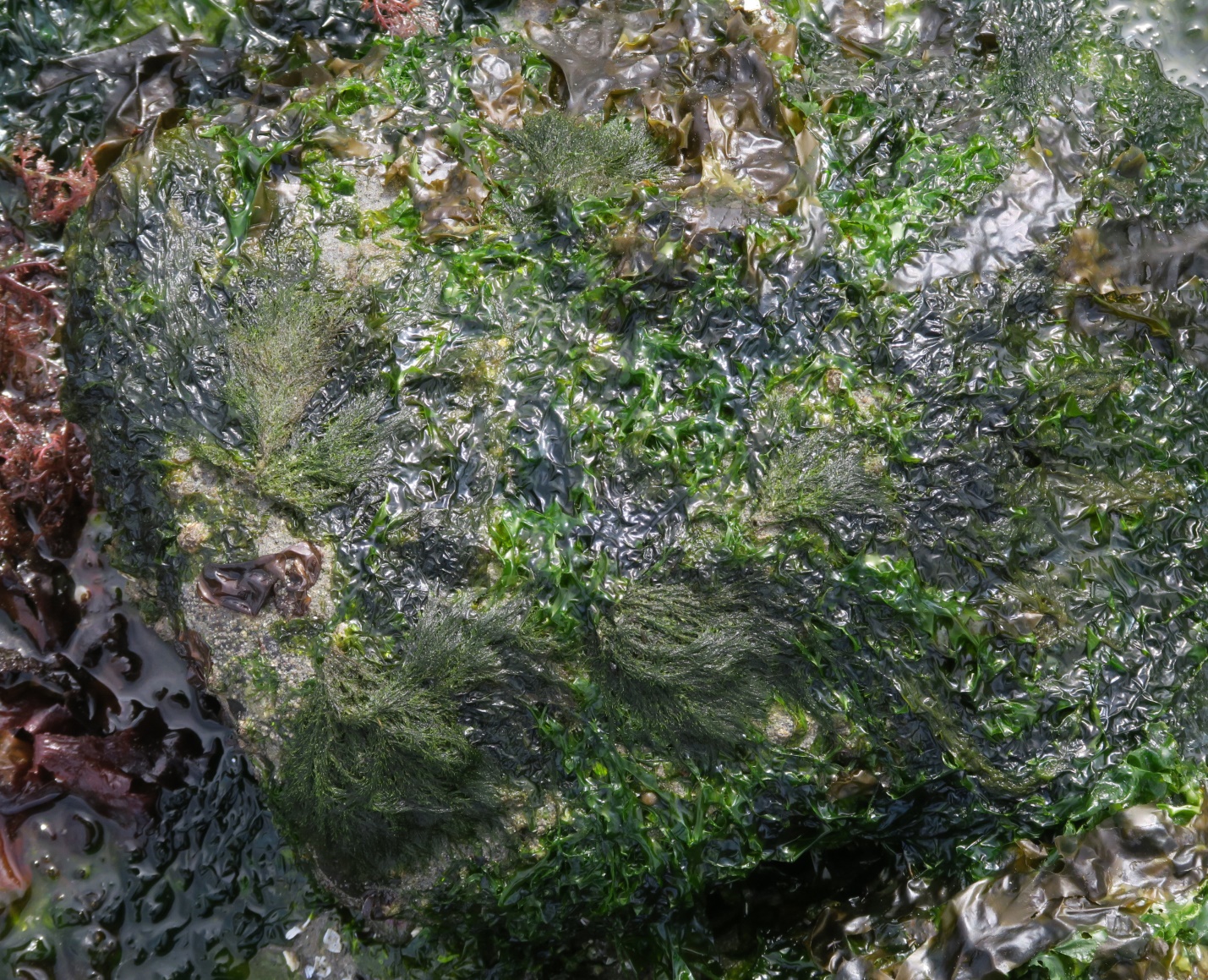
Acrosiphonia arcta
Arctic Sea Moss, Short Green Rope
10 April 2024
Kye Bay, Strait of Georgia, B.C., Canada
Tide: 1.9 feet at 13:50 PDT (measured at Little River Tidal Station)
Weather: Partly cloudy (60% cloud cover), wind Southeast 10 to 15 km/hour, sea light chop, humidity 70%, 11 ˚C.
Moon: Waxing Crescent (6.1%, 2 days); Next Phase, First Quarter, 15 April 2024 at 12:13 pm PDT; Previous Phase, New Moon, 8 April 2024 at 11:20 am PDT.
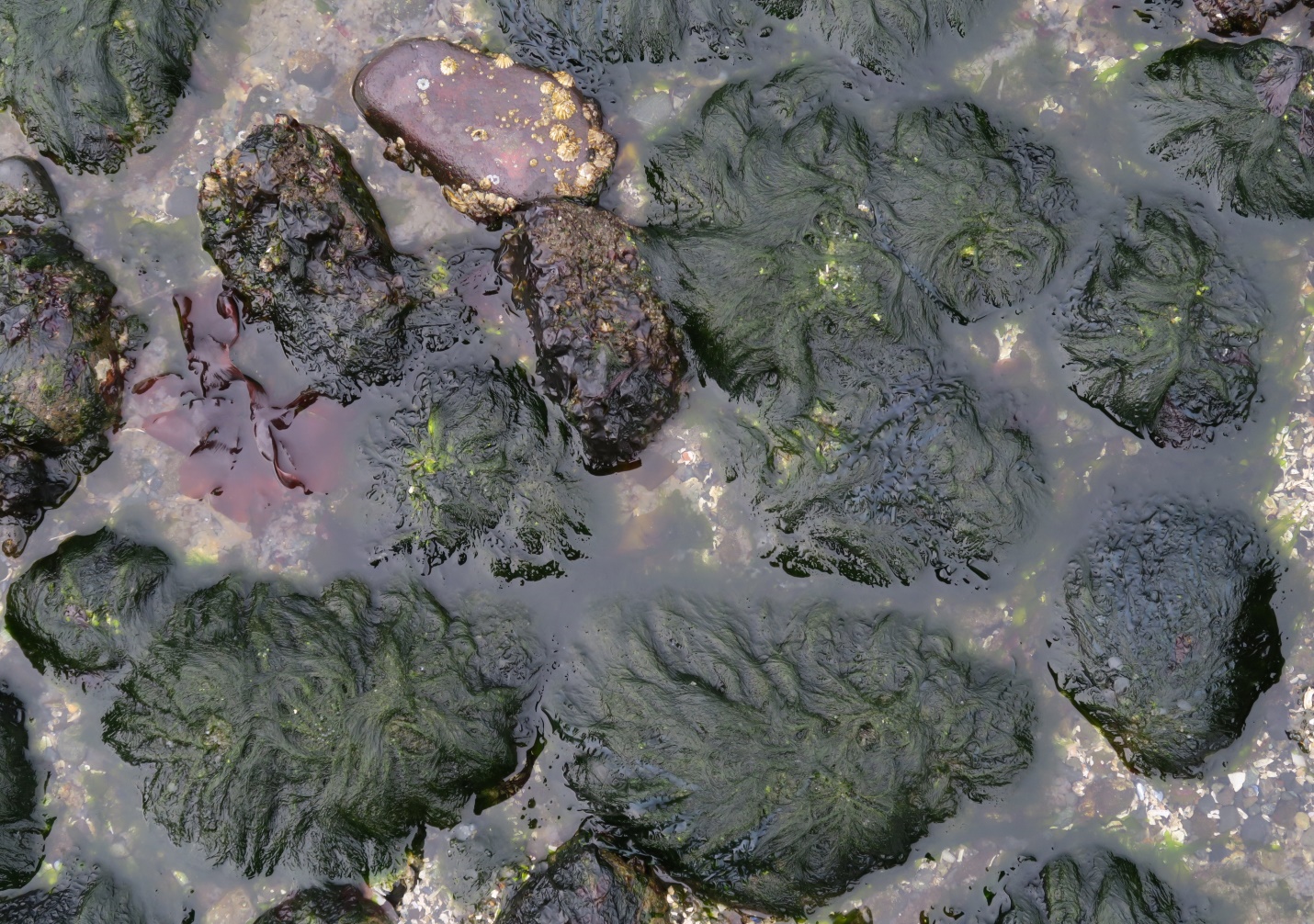
Figure 1: Topping nearly every cobble is the green alga, Acrosiphonia arcta. Point Holmes, Georgia Strait, B.C., Canada. March 20, 2021. Photo ID 27657 ©Seaweedwhisperings.com
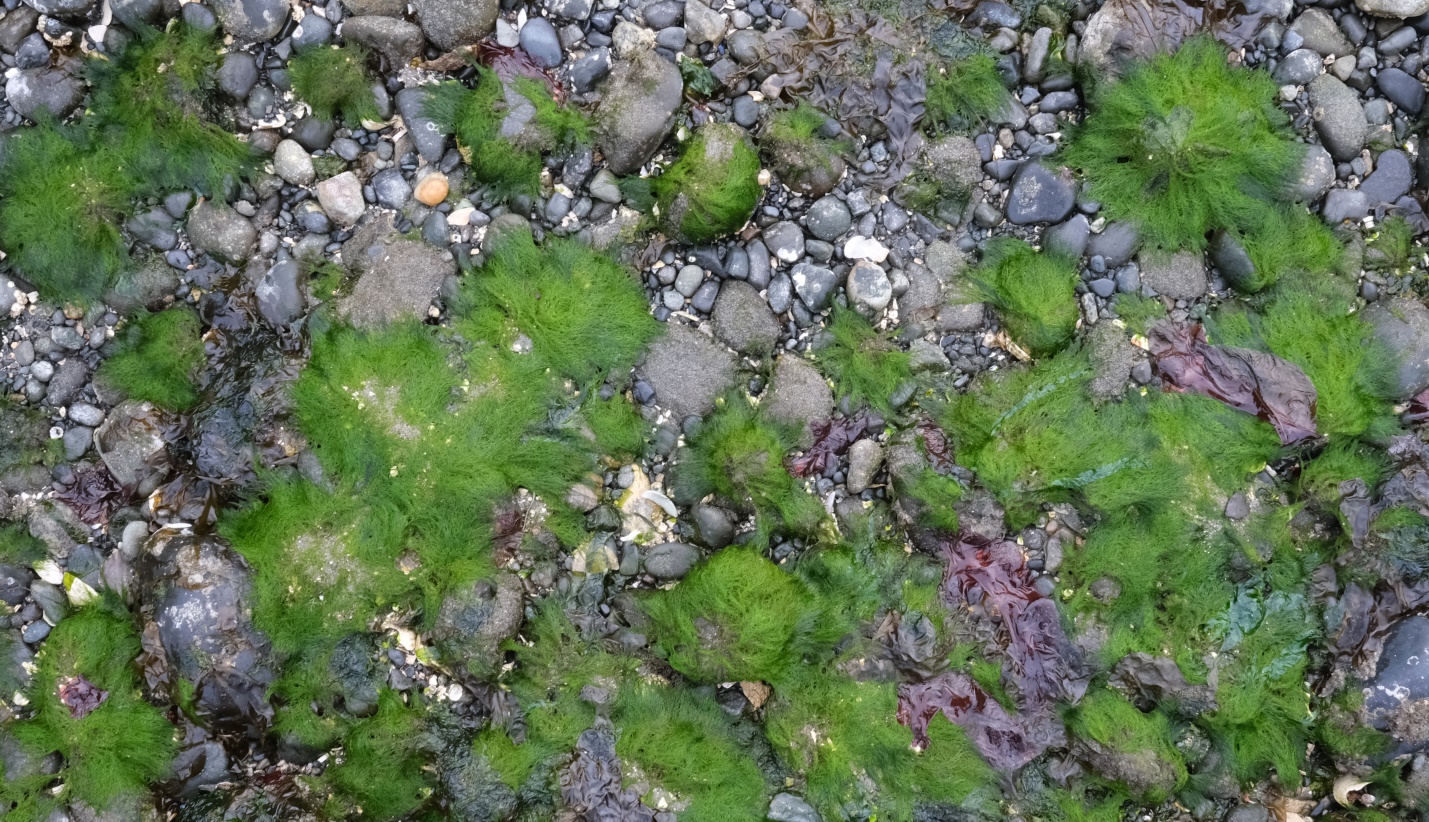
Figure 2: After several hours of being exposed at low tide, the Acrosiphonia arcta individuals have ‘dried’ a lighter green color. They splay out radially, making a distinct pattern with their tasseled branches. Point Holmes, Strait of Georgia, B.C., Canada. March 24, 2022. Photo ID 27658 ©Seaweedwhisperings.com
Person 1:
Acrosiphonia arcta individuals here are laid out like mini fiefdoms, each one atop its own rock. But they are cobbles, not the bigger boulders which are dominated with Fucus, Mastocarpus and Pyropia.
Bright, dark green and showy.
Spongy – suck up adulation, but don’t want to give anything back.
Thallus strands radiate out in all directions.
Maybe the green mop-top is actually a wig, one that clearly displays the social status of the individual.
The individual fiefdoms do well under the organization and protection of a higher authority.
Absent this authority the different Acrosiphonia ‘lords’ lose their power, and their local influence is lost – the fiefdoms are greatly diminished. They perish or wither if left to their own devices.
Social status is key to their identity and existence.
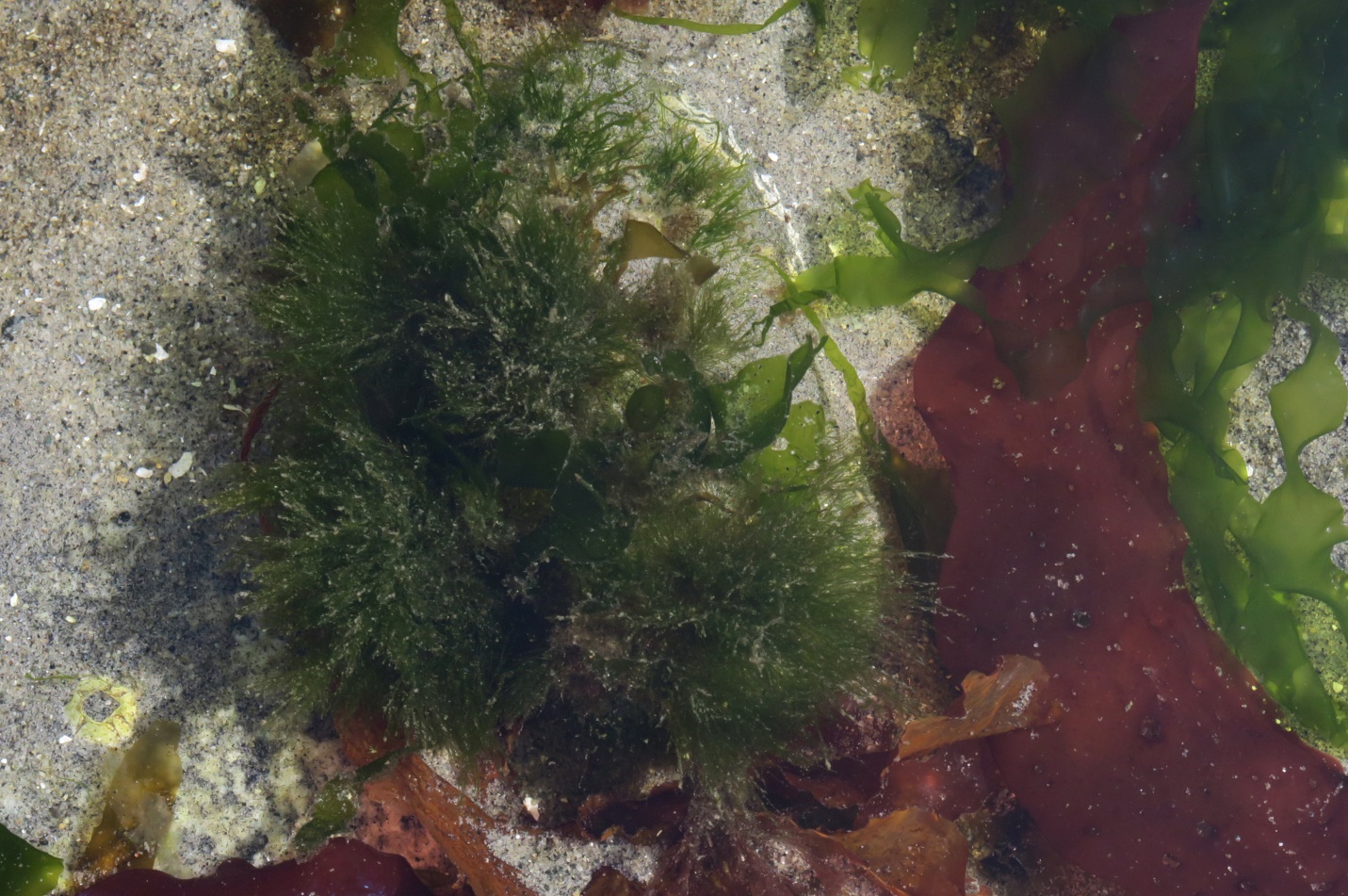
Figure 3: A young and not yet very tall Acrosiphonia arcta is seen here immersed in shallow water. The green filaments have caught a few of the abundant diatoms floating by. Kye Bay, Strait of Georgia, B.C., Canada. April 10, 2024. Photo ID 27659 ©Seaweedwhisperings.com
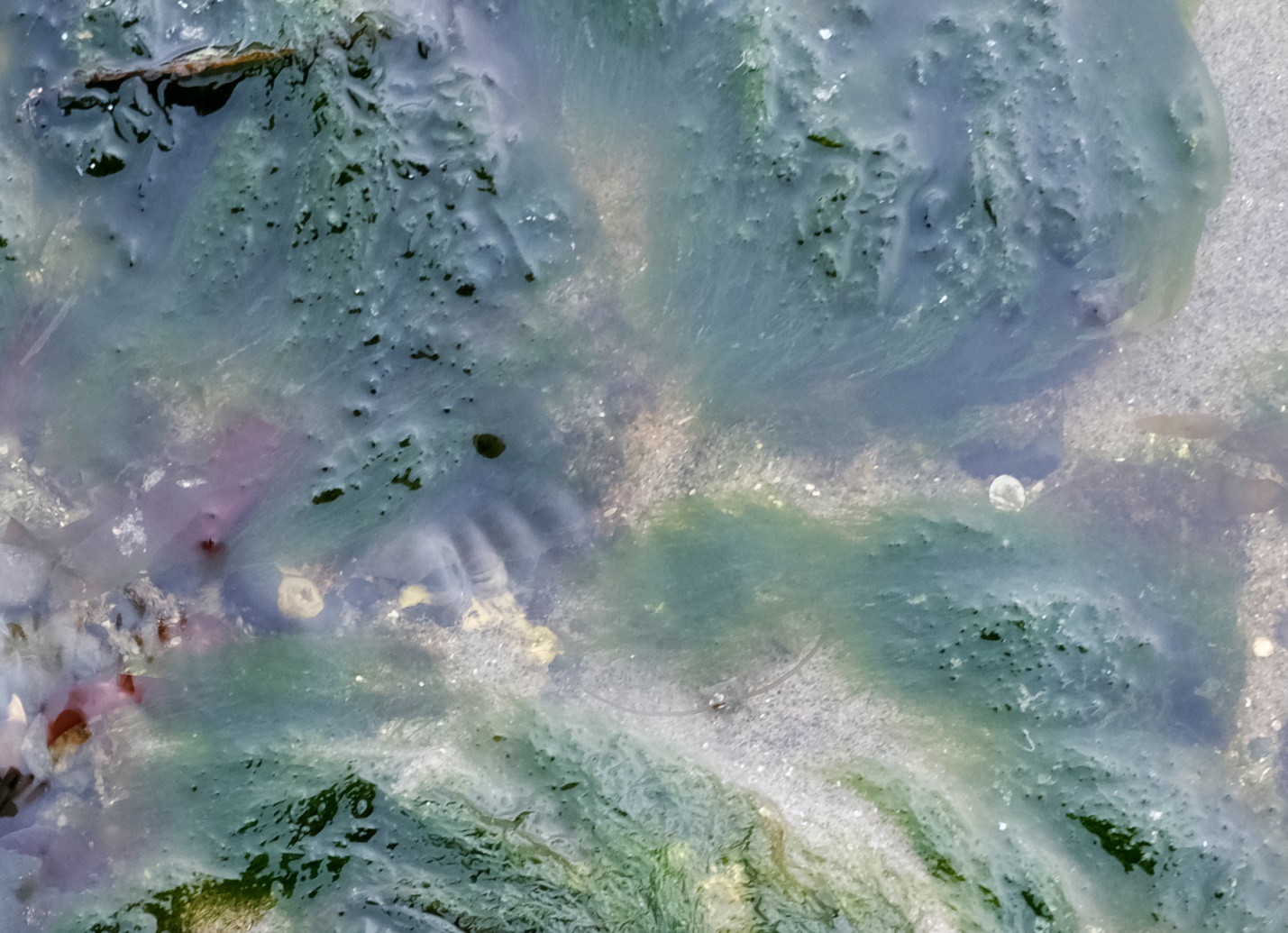
Figure 4: On another day at a different location, this grouping of Acrosiphonia is being refreshed with the incoming tide. The green filaments fluff out and billow in the water, even with some current. Point Holmes, Strait of Georgia, B.C., Canada. March 24, 2022. Photo ID 27660 ©Seaweedwhisperings.com
Person 2:
I chuckled to think that here we are “listening” to this charming “green” alga on this of all days when the dominant look on the beach has been supplied by the “reds”. But it is also a fact that today the reds are mainly cast ashore – still splendid, yes, in their number, form, textures and varieties of red. But you, Acrosiphonia arcta, are growing fresh and bright as springtime, affixed to cobbles at just right tide level.
Your choice of anchor in many points allows you to reach up into water from near a high point (in the specific locale of your intertidal bathymetry) – this presumably gives you better access to the light. It seems you simply enjoy the position and the view, as well.
And when the tide goes out you then splay out as a green covering (?), blanket (?), carpet (?)…none of these words seem right??? I can’t find the correct descriptive term here..., my use of language is failing me.
It seems clear to me, Acrosiphonia, that you’d much rather be upright in the water – puffed out and billowed in delight. But out of water you also are striking; a vivid, deep green that dries a bit lighter in color.
Exposed at low tide you conserve your water well; you collapse into a set of filaments that lie in a relatively untangled manner, hugging the substrate closely and holding your own parts closely together, too. Water is ‘held’ between these many close threads of green, and it seems that only the top filaments dry out, those most exposed to sun and wind.
Highest within the intertidal zone that you occupy, you can be often found on rocks with few if any other species of algae growing alongside. Perhaps here you get started early or you’re expanding your range, or maybe it is simply that you can afford to be not too fussy about where you establish yourself. A modest cobble, a few barnacles, some anchor space and you’re good to go! Lower down in the intertidal zone, however, more and more species of macro algae crowd the substrate. In these areas you are often on cobbles that are also occupied by other greens of the genus Ulva. Here you do hold your place, and you are distinctly different in form, but certainly you also experience more competition.
You don’t grow very tall that I’ve ever seen, Acrosiphonia arcta, so I think as the spring days add up you may find that some other leafy greens dominate; it could be very hard to find Acrosiphonia under the foliose spread of Ulva lactuca and Ulva linza later in the season. But for now, you are a notable presence both in size and nature.
There’s something about how you capture the light, both when immersed and when out of water – you have a sparkle to you. It is a fine sparkle added in with your rich green coloration – the combination is attractive.
Underwater, with all your little filamentous branches spread out, your green is a lighter shade.
Immersed you spread out and stretch out and fluff out; your presence is soft and billowy and light looking.
Big creatures hardly pay you any mind, but smaller ones might not want to enter the “realm” of your multiple thread-like branches. It feels to me almost like there is something going on there amongst your branches and it is as if they are “charged” or somehow “electric” in nature – the slight sparkle possibly warns others about the underwater electric zone you create for yourself. Why this feels somewhat ‘dangerous’ to or at least ‘to be avoided’ by others I’m not certain, but it feels that to those of the relevant size, it would be wise to steer clear of Acrosiphonia arcta’s green “inflated and active” reach.
Something leaps from green filament to green filament, to and fro, here and there, and this is intrinsic to you, Acrosiphonia arcta. This ‘something’ feels like it might be the seaweed equivalent of circulation and what it is that is circulating is not simple nutrients or bodily fluids such as in an animal’s vascular or lymphatic system, no, it seems to me like it is ideas, concepts, experiences-to-be-shared. And if these cannot move by physical means, then how do they move… by energetic impulses and connections, perhaps? And there is a ‘charge’ involved, possibly such as stimulates the flow of messages between the synapses of nerves.
And just what happens if one should get in the middle of that set of impulses making their connections..., that’s the aspect that the “warning” to keep away is calling attention to. I think it fries, disables or at least confuses the intruder’s own brain or ‘thinking apparatus’ should they enter in.
Early in this Whispering I couldn’t find a suitable word to describe the type of laid down covering this seaweed makes when it is exposed – I lacked much of my usual facility with language. And the next day, when I was doing some simple calculations I drew a complete “blank”; I was incapable of remembering the steps to do long hand notes for the simple multiplication of numbers. I could work out the answer by doing the mathematics in my head, but not with the longhand written process. My use of mathematical processes failed me, too.
I think I was experiencing how this seaweed “thinks”. It has an “energy field” to work with. It has no need for labels, or formulae or disciplined structures. It’s to and fro, here and there, and the whole energy field holds whatever awareness may first be known in any of its parts.
It also seems that there is no “storage capacity” in the ‘thinking apparatus’ of Acrosiphonia arcta. There is no place to store vocabulary or systems of thought such as mathematical formulae. The ‘intelligence’ and/or ‘knowing’ is of the moment; perceptions are taken in at various green filaments and that information is shared with the whole, assessment of the data is carried out with speed and understood by the “the whole” such that the suitable action (or reaction) might be carried out.
Is this like the primitive “nerve net” I’ve read about with cnidarian animals; the net being a type of sensory locator that stretches around the whole creature? Certainly there was the feeling that something was being transmitted between the filaments of this seaweed, and the sense was that when immersed the whole mass of filaments formed a comprehensive unit that included the watery space between their branches.
Ah…, perhaps this is where the definition “tight” comes in; ‘arcta’ in Latin, means tight, or held close. Perhaps this is why there is a desire for “no trespassers” within their green filaments, as this would block their “transmission channels”. To keep their “thinking apparatus/brain” entire and in good working order, there needs to be suitable space between filaments and only sea water, nothing else.
Figure 5: On a larger cobble and lower down in the intertidal zone, here the Short Green Rope seaweeds are forced to share space with some Ulva and Pyropia species. Kye Bay, Strait of Georgia, B.C., Canada. April 10, 2024. Photo ID 27661 ©Seaweedwhisperings.com
Discussion:
They have lost power yet they are still notable, on display, showy – at their level.
Showy, like the tassels trimming velvet curtains in a grand theatre. They are rather fancy, but they are not in any way truly necessary. Perhaps they add emphasis, serve as a reminder of what is the wealth of true power, but they are not that wealth or power themselves.
Empty or blank – the impact on thinking that occurred with this Whispering was on one hand a consequence to unsuspecting intruders, but it could also be a useful trait for Acrosiphonia arcta themselves. Perhaps as a ‘lord’ trying to maintain their fiefdom they have to impose rules, order, and penalties on others that can’t always be even close to fair or equitable. If this lord can void their being of the awareness of these moral evaluations, then carrying out the edicts is easier.
Conclusions are arrived at by rote; this is thinking that is empty of current input and anything new. There is a kind of replay or representation of what has been previously concluded, and while this gives the air of confidence, it is not a way to fuel true power.
It was noted that Acrosiphonia arcta likes to absorb adulation, and the first thought was that they don’t WANT to give anything back. Considering the themes of emptiness and loss of power, perhaps the issue is that they CAN’T give anything back. They have little to give of their own, and they need approval of a higher authority to give anything from the realm above their fiefdom. They exercise some control at a certain level but they do not hold the “keys to the kingdom”. Without true power they work hard to retain their social status, relating with predictably charming manners and wearing the appropriate costume/wig; they are aware, however, that this is a status that is granted only as long as overall order is maintained in the larger social fabric of which they are a part.
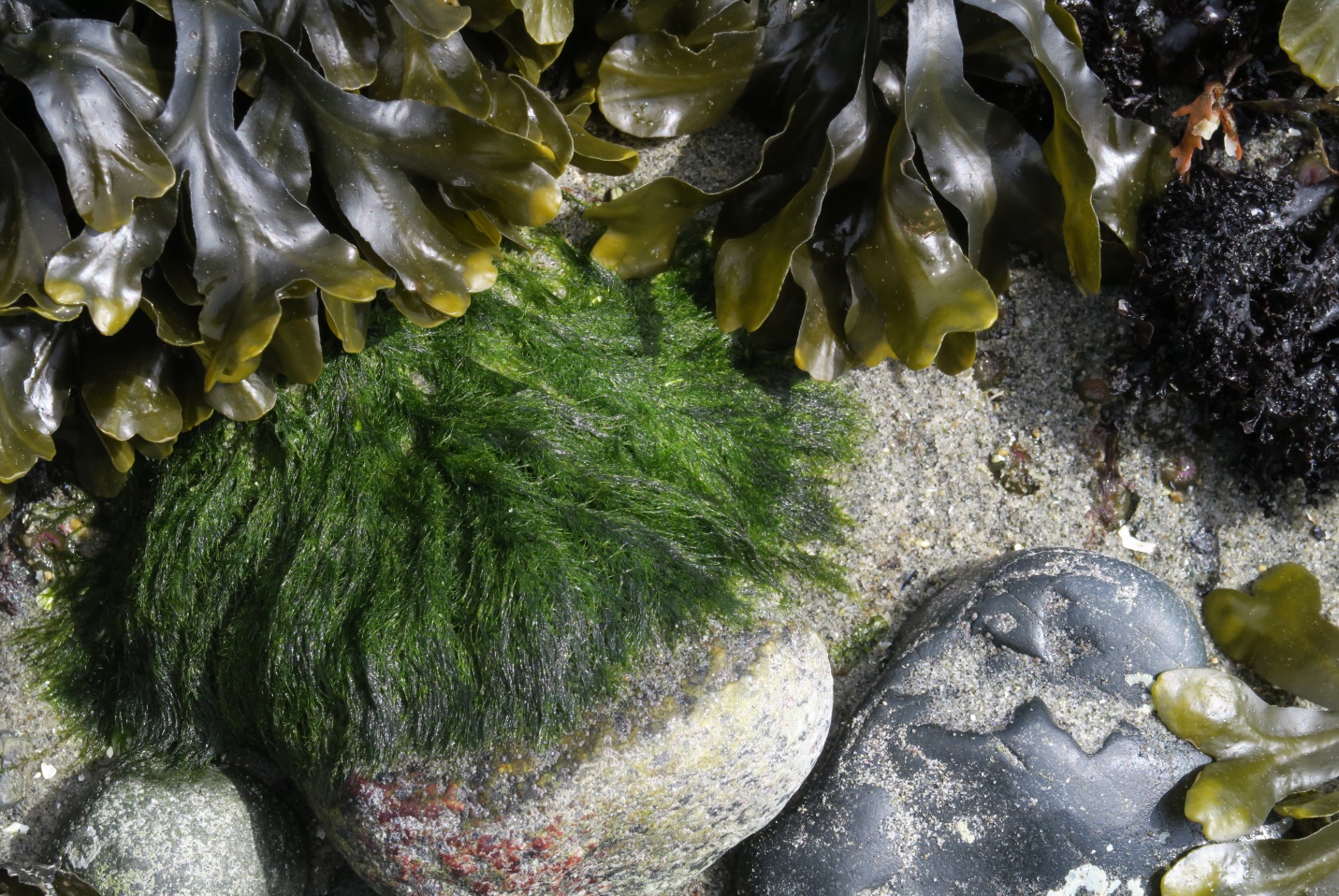
Figure 6: Unable to splay out in all directions, this individual Acrosiphonia arcta is still doing its best to give the right spacing to its tassels. The Fucus distichus growing nearby is very young, and will likely encroach on the Short Green Rope’s territory, at least when all are exposed and flattened at low tide conditions. Kye Bay, Strait of Georgia, B.C., Canada. April 10, 2024. Photo ID 27662 ©Seaweedwhisperings.com
Biology & Natural History Information:
Description:
The medium to dark green thallus forms distinctive mats or tufts up to 6 cm (2.25 in) tall. The mats are composed of very fine, branching uniseriate filaments, and branches are held together by colorless rhizoids (curved branches known to other Acrosiphonia species are rare). The tips of the branches do not taper, are usually broadly rounded and are at least as broad as lower portions. Cells are longer than they are broad.
Habitat:
Acrosiphonia arcta occurs on boulders, cobble and bedrock in the mid to low intertidal of protected to semi-exposed habitats. It is generally seasonal and is only prominent in spring and summer.
Distribution:
In the Pacific Northwest this seaweed extends from the Aleutian Islands Alaska, down along the British Columbia coastline and through to Washington and Oregon states. It is also found in the Arctic Ocean, and the Bering Sea; on coastlines of the west Pacific including Russia, Japan and the Commander Islands, the North Atlantic, Baltic Sea, North Sea, the coast of Chile and sub-Antarctic islands.
Remarks:
Seaweeds in this genus wring out like a sponge when squeezed; the thallus holds water well. The physical form described above is the gametophyte stage of this species; the sporophyte is unicellular and lives in the tissues of some species of red algae.
Classification:
Phylum: Chlorophyta
Class: Ulvophyceae
Order: Acrosiphoniales
Family: Acrosiphoniaceae
Genus: Acrosiphonia
Species: Acrosiphonia arcta (Dillwyn) Gain 1912
Former Name(s):
Conferva arcta Dillwyn 1809; Cladophora arcta (Dillwyn) Kützing 1849; Spongomorpha arcta (Dillwyn) Kützing 1849.
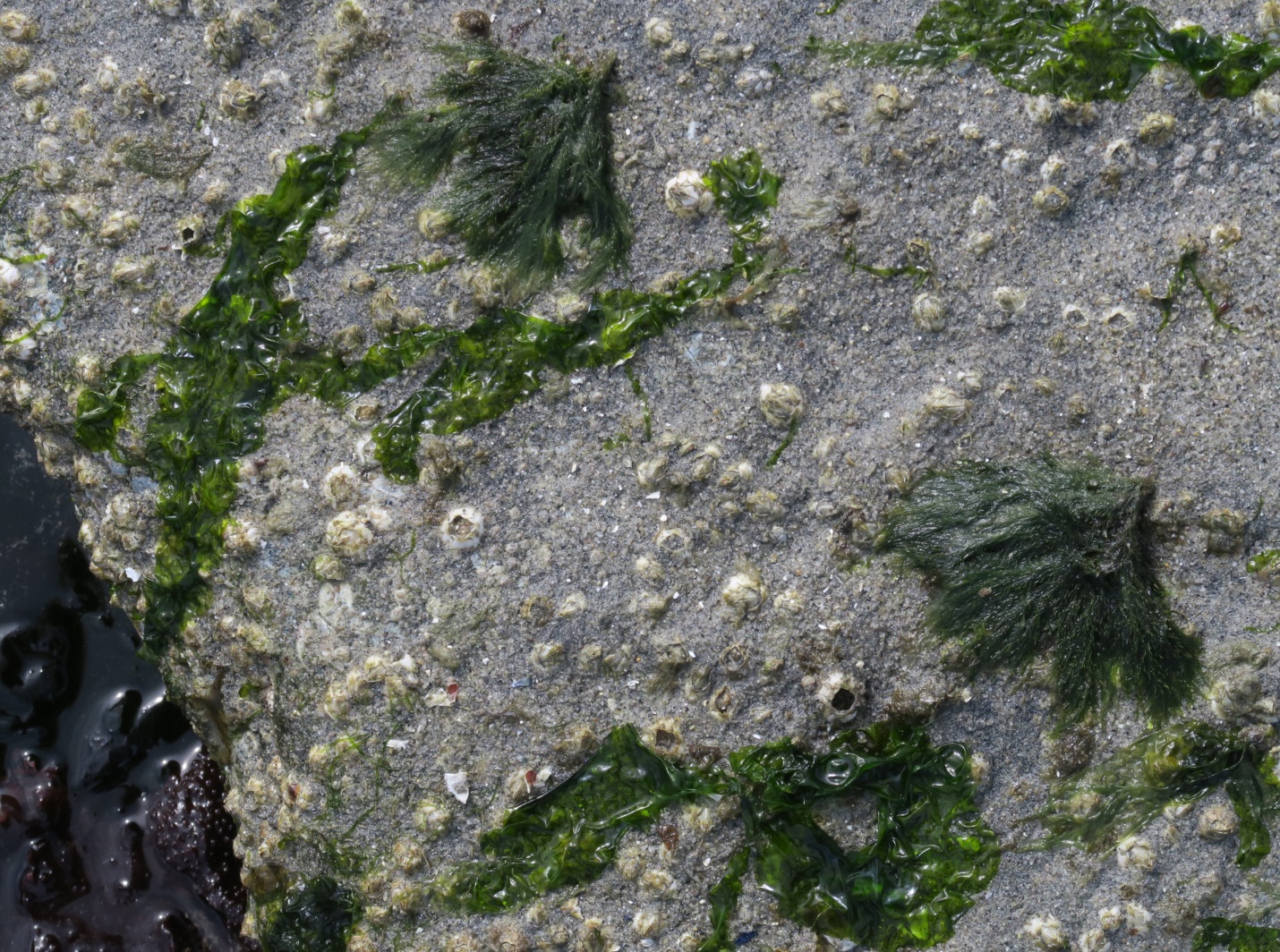
Figure 7: Occupying fringe territory at a higher intertidal level, visible here are two Acrosiphonia arcta individuals that are draped like swinging tassels with the slope of the uplifted boulder. Kye Bay, Strait of Georgia, B.C., Canada. April 10, 2024. Photo ID 27663 ©Seaweedwhisperings.com
![]()
